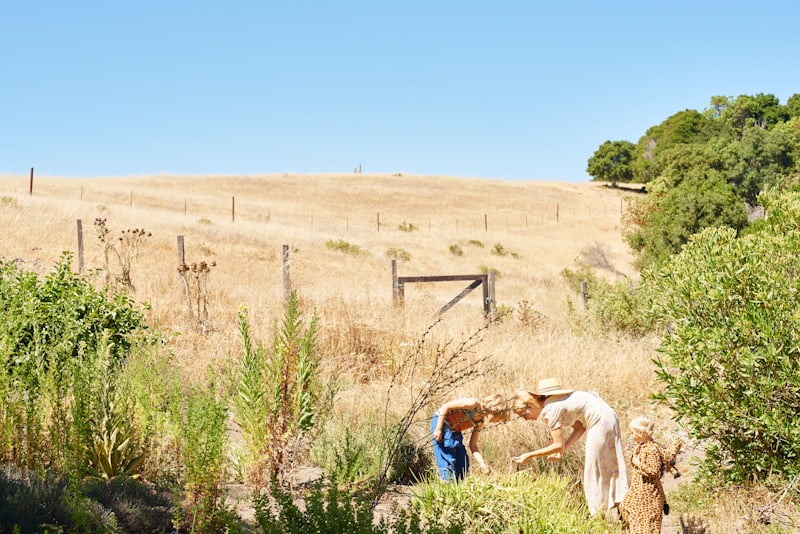
Teaching Kids The Importance Of Protecting The Environment
Written by James Kicinski-McCoy
Photography by Kelci Potter; photographed by Maria Del Rio
The effects of climate change are more prominent than ever before, and it’s becoming increasingly crucial that we teach our kids the importance of doing good work to help the planet. In truth, we could all be doing our best to become more sustainable and increase the longevity of the environment, and not just on Earth Day. That’s why we talked to expert in education for sustainability for early childhood learners and editor of the textbook, Young Children and the Environment: Early Education for Sustainability, Julie Davis, to give us the 4-1-1 on all we (tots included) can be doing to keep our planet green. Below, Julie answers a few burning environmental questions and shares her top tips for teaching kids the importance of protecting Mother Earth, as well as what you can do to keep everyone in the family inspired to make going green a part of your daily routine. After all, the future of our planet is in the hands of our children, so why not start teaching them now?
Why is educating young children about environmental sustainability important?
“Learning about sustainability from an early age helps develop sustainable patterns of behavior that can become sustainable lifestyle habits in the future, such as being careful with scare resources. Young children can learn to be water and energy savers, good recyclers, and to think about the amount of waste we all generate on a daily basis. Young children are most at risk from unsustainability because they face greater and longer exposure to the worst of its consequences. In terms of health impacts from climate change, for example, this means greater exposure to diseases such as malaria and dengue fever. Rising temperatures are likely to lead to increasing numbers of preschoolers requiring treatment for fever and gastroenteritis at hospital emergency departments because they have less capacity to regulate their bodies during heat waves. Dislocations due to extreme weather events can lead to trauma and other mental health impacts on families, with children being highly vulnerable—not every child can ‘bounce back’.”
What are five tips you have for teaching kids the importance of protecting the environment?
1. Let them see you caring about the natural environment!
2. Explain to children why you recycle, turn off the lights, walk instead of taking the car, etc. Parents are children’s first teachers.
3. Model “green housekeeping”. For example, minimize waste and reduce water and energy consumption at home, use “Earth-friendly” cleaners, and have a compost bin or worm farm.
4. Join the ever-expanding recycling and up-cycling movements.
5. Grow a garden and involve the whole family in all phases—garden design, planting, preparing and cooking foods, eating, and recycling.
How can parents of city-dwelling families cultivate an appreciation of the environment in their children?
“Start with your own backyard
! Make places for children’s play that can be used every day, and invest in your children before putting in the snazzy backyard barbecue that might be used once a month or less. If you live in an apartment, grow a garden in pots, and make this a joint activity with your children,” says Davis. “Make great use of local, natural play spaces. This includes parks, creeks, and beaches. Anywhere young children can have deep engagement with the natural world. Also, support local community projects that focus on environmental issues and topics
. Community interest keeps politicians’ attention on environmental activities. Finally, become politically active for the environment
. Hold politicians accountable for ideas and plans that may reduce community amenity to natural places, or that work against the long-term interests of children such as the support renewable energy options and public transport initiatives. It’s the way of the future and, indeed, of the present!”
What can parents do to encourage schools and childcare services to teach their children about environmental sustainability?
“Become familiar with the mandated national curriculum guidelines for schools and preschools that support sustainability learning. Use these to build a case for the inclusion of Education for Sustainability, or EfS, in the local curriculum. Also, encourage educational projects that put children’s learning and action at the heart of the project
. This includes installing solar panels or a water tank at the kindergarten. Turn this into a project that involves the children in researching and designing plans, too. They will learn lots of science, as well as skills of collaboration, innovation, communication, and the like, says Davis. “Also, join education for sustainability networks and become campaigners and co-learners with other parents and colleagues about EfS.
There are early childhood EfS networks in all the eastern states, for example, that welcome parents, teachers, and others with an interest in the long-term welfare of young children and the environment. Finally, create or support a learning community within your local educational setting to find out more about sustainability issues.
This is professional and personal development for all involved, aimed at creating healthy and sustainable futures.”
Share this story




